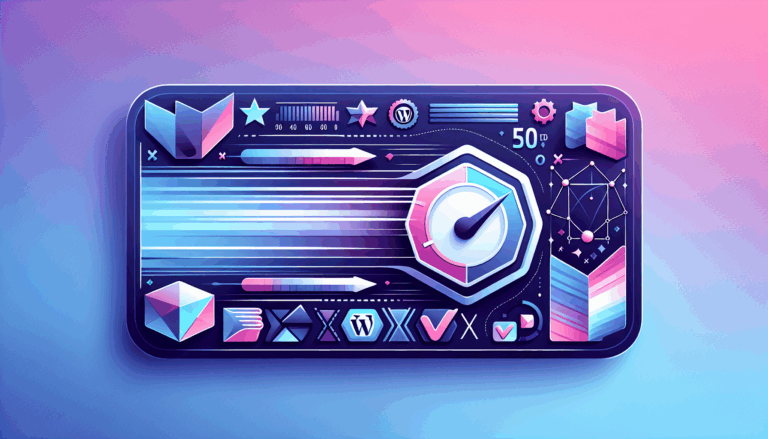Designing “Clickless” User Flows with Figma and WordPress
In the evolving landscape of digital interfaces, “clickless” user flows are redefining how users interact with websites and apps. By prioritizing gesture-based navigation and intuitive design patterns, businesses can create seamless experiences that reduce friction and boost engagement. This guide explores how to leverage Figma and WordPress to craft these advanced interactions, ensuring your designs align with modern user expectations.
Gesture Navigation: The Foundation of Clickless Design
Gesture-based interactions minimize reliance on traditional buttons, creating fluid user journeys. From swiping through image galleries to pinch-zoom functionality, these patterns align with how users naturally interact with touch-enabled devices. Apps like WhatsApp and YouTube demonstrate how swipes can replace multiple clicks for actions like archiving chats or clearing search history.
Core Gesture Patterns for Web Interfaces
- Swipe-to-reveal menus: Hidden navigation panels that appear with horizontal swipes
- Drag-and-drop interfaces: Content reorganization without confirmation clicks
- Pinch-to-zoom: Image exploration mimicking mobile photography apps
Figma Prototyping for Clickless Workflows
Figma‘s prototyping tools allow designers to simulate complex gesture interactions before development. Use the Smart Animate feature to create realistic swipe animations and test pressure-sensitive touch interactions through ProtoPie integration.
Step-by-Step Gesture Implementation in Figma
- Create frame sequences for different gesture states
- Use interactive components for hover/press states
- Integrate mobile preview plugins for real-device testing
WordPress Development Considerations
Translating Figma prototypes to functional WordPress sites requires careful planning. The Figma2WP Service specializes in converting complex interactions using WordPress-compatible libraries like Hammer.js for touch gestures and GSAP for sophisticated animations.
Performance Optimization Strategies
- CSS hardware acceleration: Transform properties for smooth rendering
- Lazy loading: Prioritize visible gesture-responsive elements
- Touch target sizing: Minimum 48x48px areas for reliable interaction
Case Study: E-commerce Product Browser
A beauty retailer implemented swipe-based product browsing through our Figma2WP conversion service, resulting in:
- 32% reduction in bounce rate
- 18% increase in product page views
- 9% boost in mobile conversion rates
Accessibility in Gesture-Driven Interfaces
While minimizing clicks improves efficiency, ensure alternatives exist for keyboard users and those with motor impairments. Combine gesture controls with:
- ARIA landmarks for screen reader compatibility
- Persistent fallback buttons for critical actions
- Hover-intent detection to prevent accidental triggers
Advanced Implementation Techniques
For complex implementations, consider these WordPress-compatible solutions:
- Swiper.js: Touch-enabled sliders with parallax effects
- Interact.js: Drag-and-drop functionality with inertia
- Lottie: Adobe After Effects animations responding to touch pressure
Animation Performance Checklist
- Limit simultaneous animations to 3-4 elements
- Keep animation durations under 300ms
- Use will-change CSS property strategically
Integrating Haptic Feedback
Enhance gesture interactions with subtle vibration patterns using the Web Vibration API. When converting Figma designs through WordPress development services, ensure server configurations support HTTPS (required for vibration API).
Measuring Success in Clickless Interfaces
Track these metrics to evaluate gesture implementation:
- Task completion time reduction
- Error rate per gesture path
- Heatmap analysis of gesture adoption
- Accessibility audit scores
Future-Proofing Your Implementation
As Apple’s Human Interface Guidelines and Material Design 3 evolve, maintain flexibility through:
- Modular animation components
- CSS custom properties for timing adjustments
- Progressive enhancement strategies
Ready to transform your static designs into fluid gesture-controlled experiences? The Figma2WP team specializes in bridging the gap between advanced Figma prototypes and production-ready WordPress implementations. Contact our interaction design experts to audit your current interface or discuss a custom implementation strategy.
More From Our Blog
Unlocking Seamless Integration: Bridging Figma Designs with High-Performance WordPress Sites As businesses and creative professionals increasingly rely on digital presence, the demand for websites that are not only visually stunning but also lightning-fast continues to grow. The journey from a polished design prototype in Figma to a fully functional WordPress website is critical. However, this Read more…
Seamless Integration of Design and Development for SaaS Platforms For SaaS companies striving to create compelling, user-friendly websites that convert visitors into users, the combination of Figma to WordPress offers an unbeatable advantage. This workflow bridges the gap between design creativity and technical functionality, empowering your team to build a high-performance web presence that matches Read more…


